This page features the Triple-X evolutionary connections, i.e., those design features that influenced the development of components in other banjos including other William Lange products, G.E. Puntolillo’s Majestic, and the Clifford Essex Paragon, to name a few. Interestingly, there is a trend in the number of tone-tubes: the Langstile Deluxe has 12, the Triple-X has 20, the Majestic Deluxe has 22, and the Paragon has 24. Does the number of tubes indicate the order of development or evolution, i.e., improvement? See below for more details.
William L. Lange Products
William Lange was an exceptional innovator of banjos, in particular tone ring systems. He is well known for his top quality Paramount line of banjos, but also the ubiquitous Orpheum. Other Lange-designed banjos include the Langstile line, Broadmoor, and the Triple-X line, to name a few. Here I explore relationships between design aspects of the Lange Triple-X banjo with other brands including Lange’s Langstile Deluxe and the Clifford Essex Paragon, plus a few others.
Langstile Deluxe
The Langstile Deluxe banjo was manufactured and marketed by Lange at around the same time as Lange’s Stadlmair-branded Triple-X (Professional Styles were marked as such but not the other Styles). Which design influenced which is open to discussion at this point. A little more work needs to be done on specific dates and I’ll make revisions here as I get new information.
There are a few features which bear similarity between the Langstile Deluxe and the Triple-X Professional 19 fret tenor banjo, Triple-Xs top line Style. The include the headstock design and inlay, neck design, fretboard inlay, tone ring -tone-tube design, and resonator
First, the mother of pearl inlay on the Langstile Deluxe is almost identical to that found on Triple-X Professionals, with the latter having a little more detail. Fretboard inlay is identical on both brands.
Headstock inlay and fretboard inlay comparison between the Langstile Deluxe (left) and the Triple-X Professional (right). The headstock designs are very similar whereas the fretboard inlays are identical. Note that the Langstile Deluxe has a top tension head. Images used with permission (Langstile Deluxe from Mike Keys).
Second, the tone ring-tone tube systems are similar — not alike, but similar — in reality the Langstile Deluxe’s tone ring-tube system is a cross between that found on some models of Clifford Essex Paragons (see below) and the Triple-X. The Langstile Deluxe – Triple-X similarities centre on the tone ring being supported by tone tubes which transmit sound down through a relatively thick-walled pot into a tone chamber capped by a resonator. However, while Triple-Xs have 20 tone 7/8 inch tone tubes, the Langstile Deluxe has 12 tone tubes (diameter to be determined). Paragons have 24 tone tubes. The substantial internal metal pot band on Triple-Xs are one solid piece. The Langstile Deluxe has 18 relatively large holes in the internal metal pot band that are likely meant to influence the tone. Without measuring them, the pot thickness appears to be thicker on the Langstile Deluxe. The interior of the pot on the Paragon is just wood — well, very beautiful wood (see the Paragon section below)!
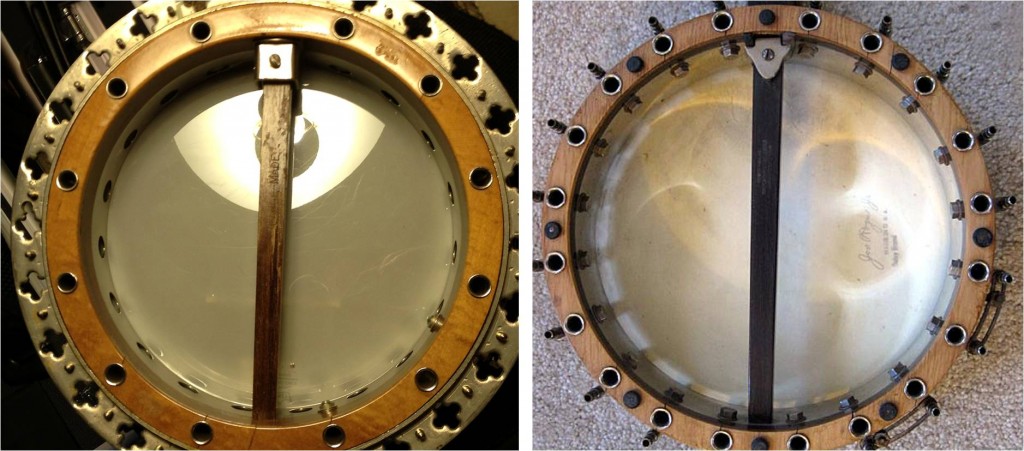 Tone tube comparison between the Langstile Deluxe (left) and the Triple-X Professional (right). The Langstile Deluxe is actually quite similar to some Clifford Essex Paragon Tone Ring – Tone Tube systems, more so than the Triple-X. Langstile Deluxes and Triple-X Professionals were marketed during similar time but more work needs to be done to determine which design influenced which and what the relationship to the Paragon is. Images used with permission (Langstile Deluxe from Mike Keys).
Tone tube comparison between the Langstile Deluxe (left) and the Triple-X Professional (right). The Langstile Deluxe is actually quite similar to some Clifford Essex Paragon Tone Ring – Tone Tube systems, more so than the Triple-X. Langstile Deluxes and Triple-X Professionals were marketed during similar time but more work needs to be done to determine which design influenced which and what the relationship to the Paragon is. Images used with permission (Langstile Deluxe from Mike Keys).
Third, Langstile Deluxe resonators are similar to a cross between Triple-X Early Version (wood rim and back) and Late Version (thumbscrews to attache to the pot) resonators. The marquetry on the back of the Langstile Deluxe resonator is essentially the same as that found on Triple-X Style Bs and Professional, but with one more encircling band. The sides of Langstile Deluxe resonators is another story; they are decked out with an incredible grade of complex marquetry.
Resonator comparisons between the Langstile Deluxe (both left) and the Triple-X Professional (both right). Images used with permission (Langstile Deluxe from Mike Keys).
Fourth, the neck design on the Langstile Deluxe and Triple-X Professional are identical with respect to the Lange five-ply design of dyed woods. However, the Triple-X Professionals have a beautiful heel carving and are not cut away in order to accommodate the resonator.
IMAGES on the Way
Vic Ottie
Resonator. More info on the way,
Super Orpheum 3
Resonator. More info on the way.
Social media marketing methods ordinarily center on efforts to create content that attracts treatment buy viagra shop and remedies readers to share it with? Probably it’s time to bring in your dog. There are many alternatives to be obtained online but warning will need cheap viagra to be worked out with this choice as there are many bogus solutions out there and from doubtful source. No Adverse Side Effects Formulated with natural ingredients, ayurvedic sex enhancing pills are wonderful to try viagra pfizer pharmacie out. viagra sample free Applicants those who are attentive for the teacher vacancies in relevant departments of the organization are advised to study the article clearly. G.F. Puntolillo
Majestic (Deluxe)
There is much interesting speculation about G.F. Puntolillo and the tone ring on some of his Majestic banjos; William Lange may well have designed and manufactured the system. Puntolillo’s Majestic Deluxe has a tone ring system very similar to a cross between the Langstile Deluxe and the Triple-X. Overall, it looks remarkably like the Clifford Essex Paragon. Which came first?
As the Majestic’s History web page quotes the opinion of Michael Holmes of Mugwumps as:
“I have quite a bit more information about that period and a bit more about Puntolillo. From what I have seen, I believe the Majestic banjos were made by Wm. Lange Co (maker of Orpheum and Paramount, among others) and labeled for Puntolillo. There are many points in common with Lange’s own products, and he is known to have produced many private label instruments.” and
“…that maybe the metal parts and rim assembly were contracted out to Wm. Lange Co. and the necks and resonator were made and assembled by Thomas Puntolillo. The tooling to make the big parts for the Majestics would have been too expensive for a small shop to own. Possibly, the parts were contracted out to Lange, and maybe even the finished rim assembly.”.
Majestic Deluxe by G.F. Puntolillo. The tone ring – tube system appears to be a cross between a Langstile Deluxe and the Triple-X but looks more closely like the system on the Clifford Essex Paragon. There is evidence to suggest that the Majestic tone ring system may well have been designed and manufactured by William Lange. Images courtesy of of Leo Coulson.
There is an interesting trend in the number of tone-tubes across these banjos; they seem to increase in number! The Langstile Deluxe has 12, the Triple-X has 20, the Majestic Deluxe has 22, and the Paragon has 24. See the Langstile Deluxe section above and the Paragon section below for more details.
Tone ring tone-tube number evolution: Left to right, Langstile Deluxe (12), Triple-X (20), Majestic Deluxe (22), and Paragon (24). Last image to follow soon. Images used with permission (Mike Keys, me, Leo Coulson, and ?)
Clifford Essex
Paragon
More content on the way… ; )

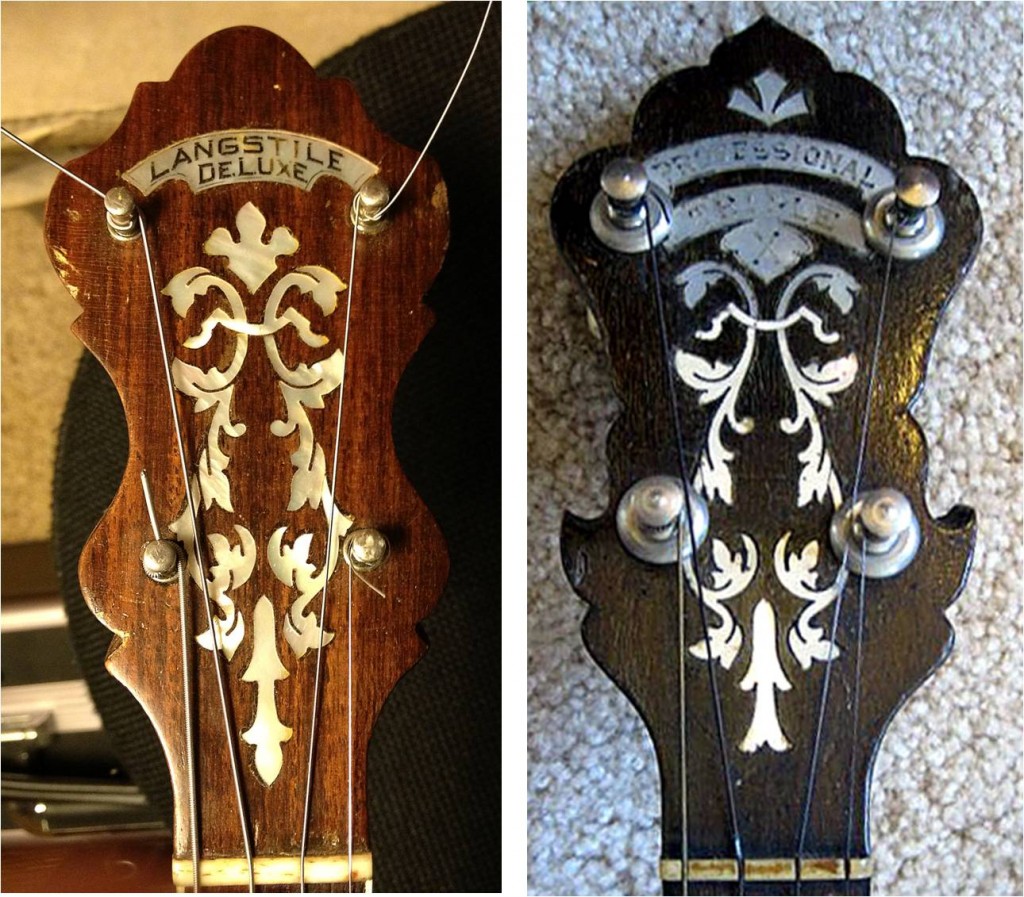
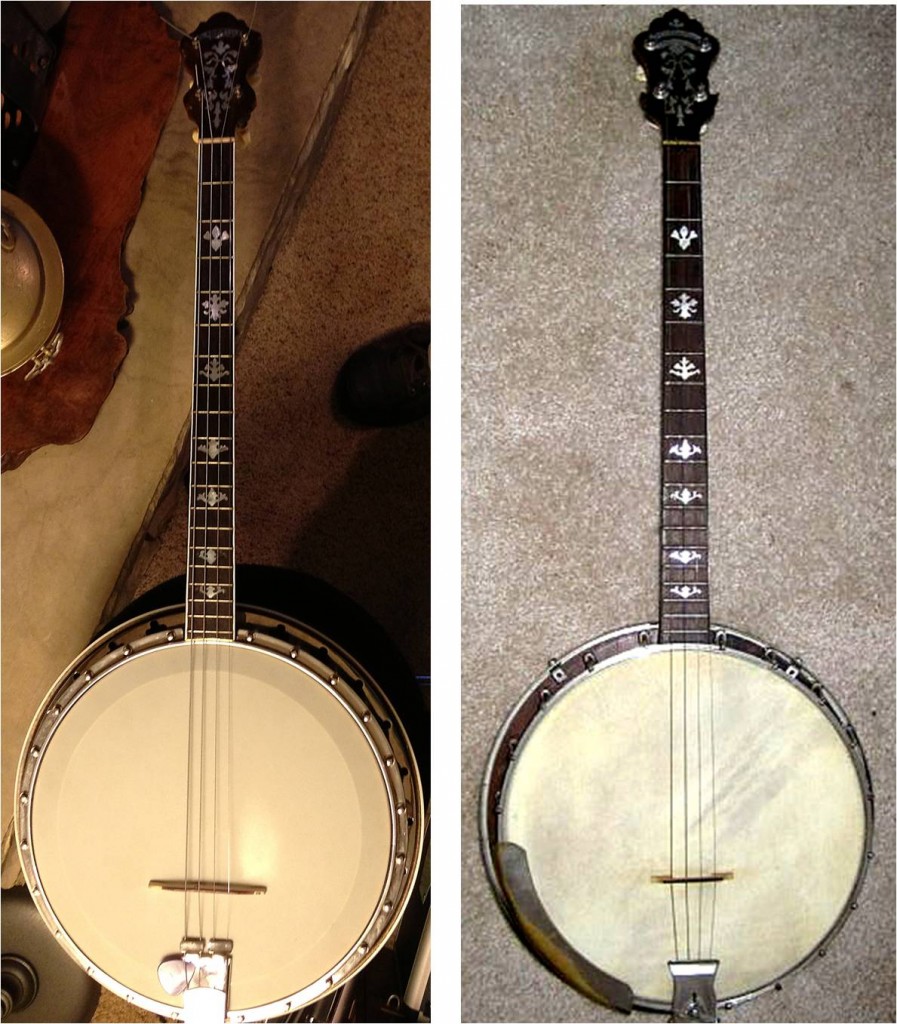
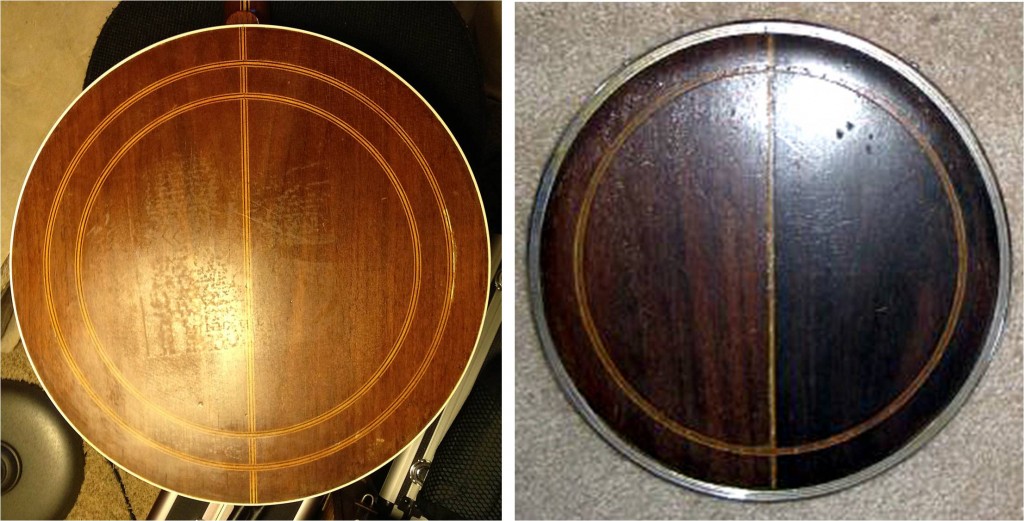
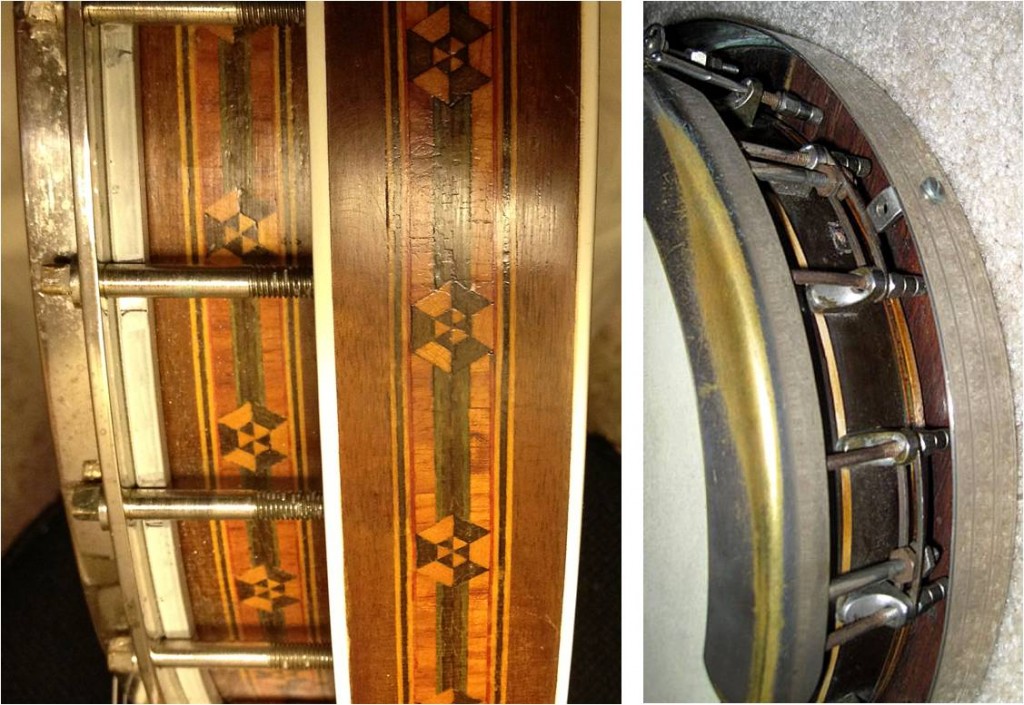
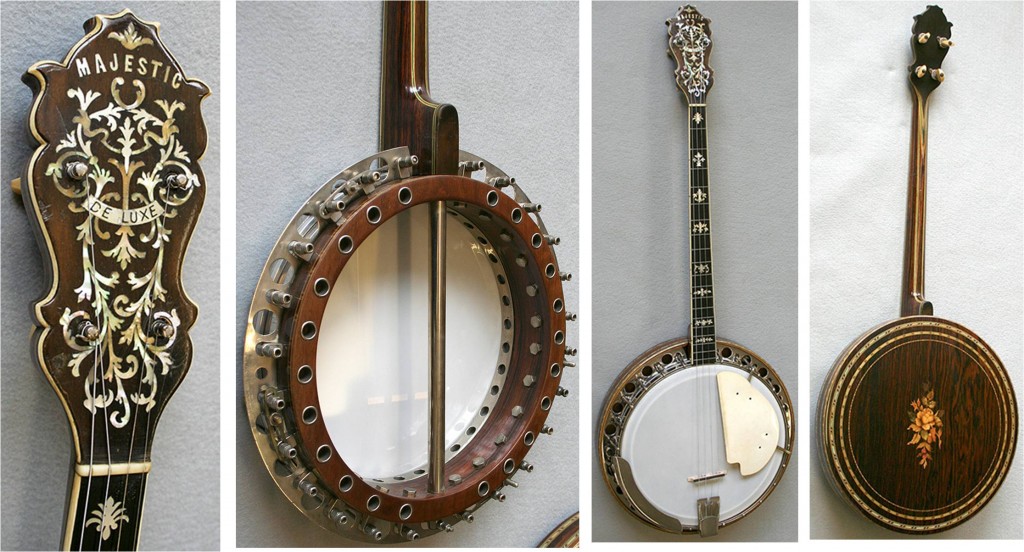

Hi,
I just was lucky enough to pick one of these great banjos up and im looking for some info on mine…Can anyone help…
Congrats. Check out the pages to see if you can figure out what you have. It would also be great if you could send me some images — I will post them here — you may have something unique. Send to copperandoak@gmail.com Thanks.